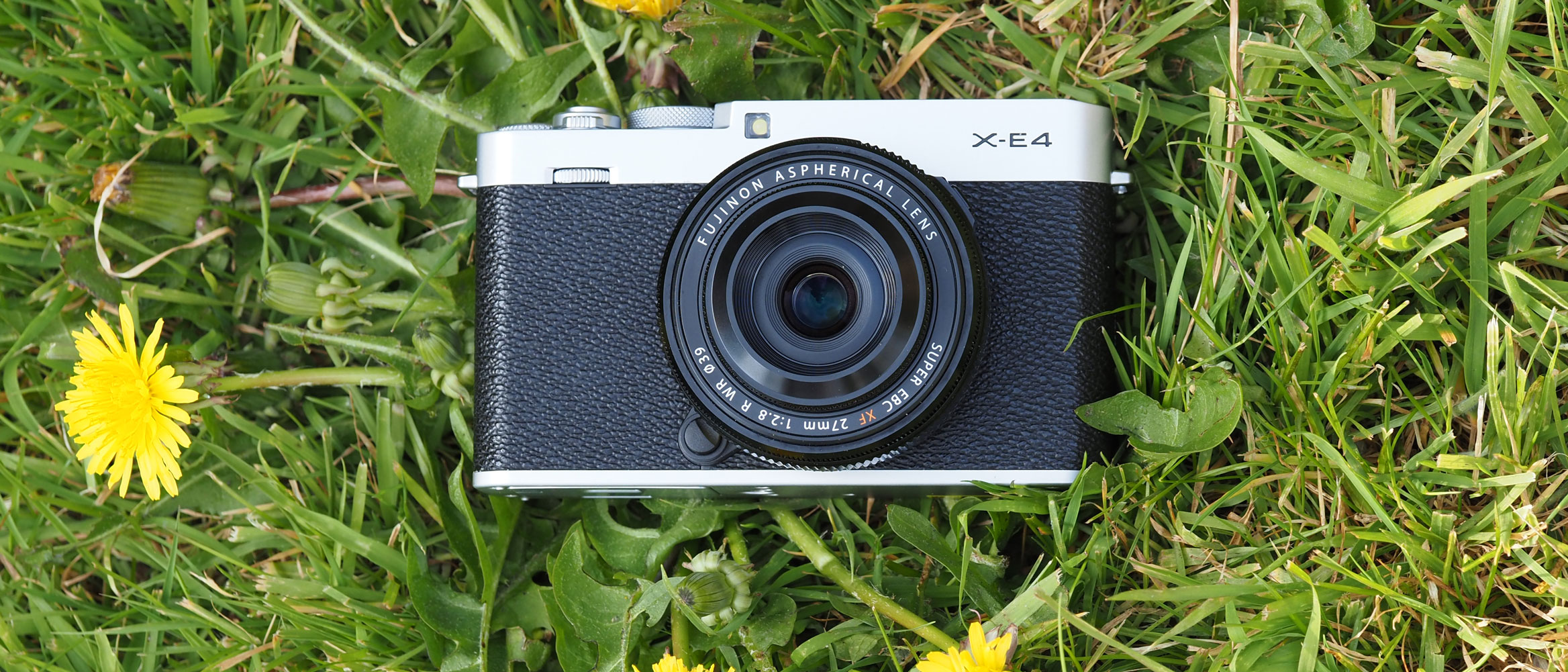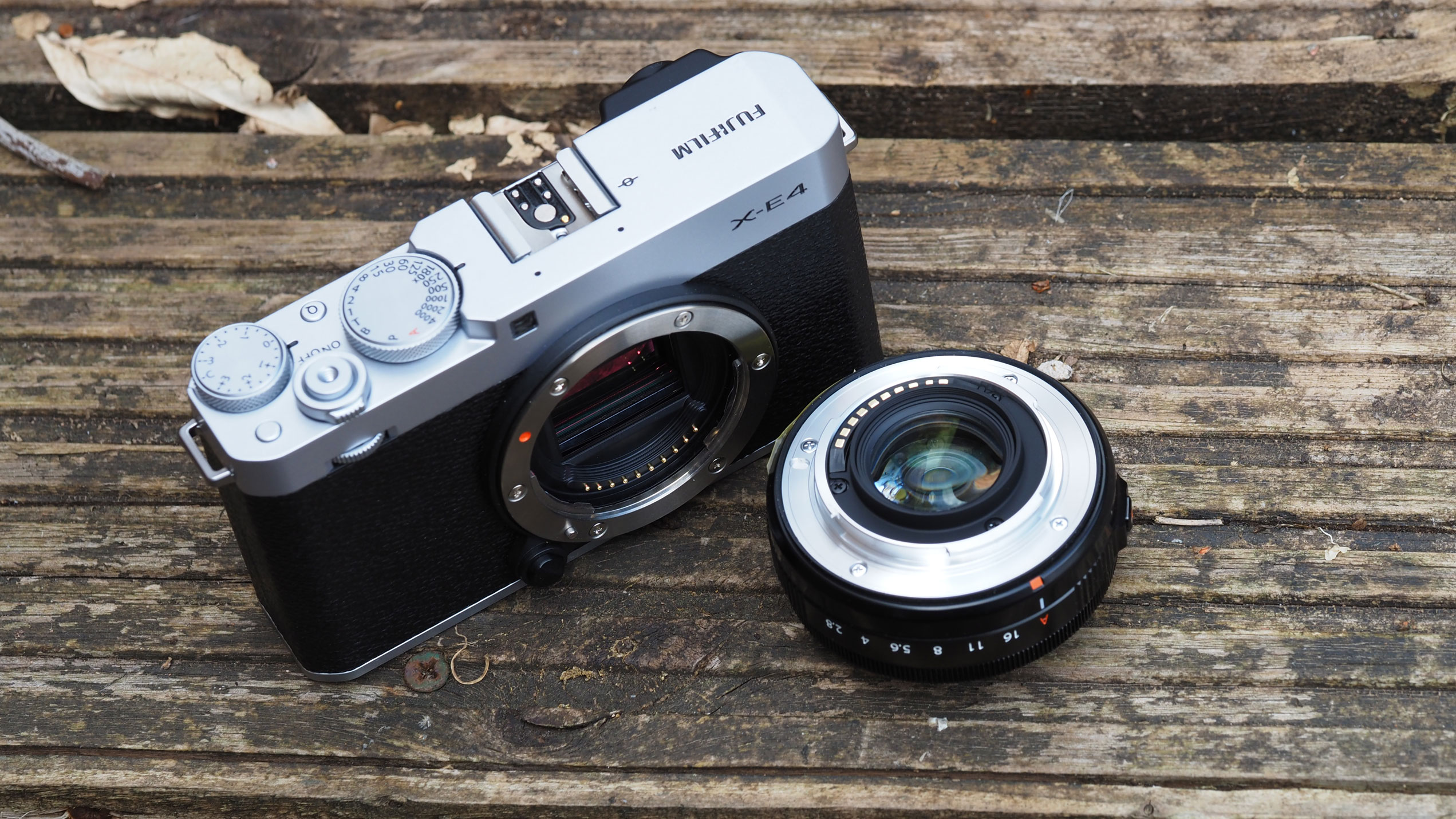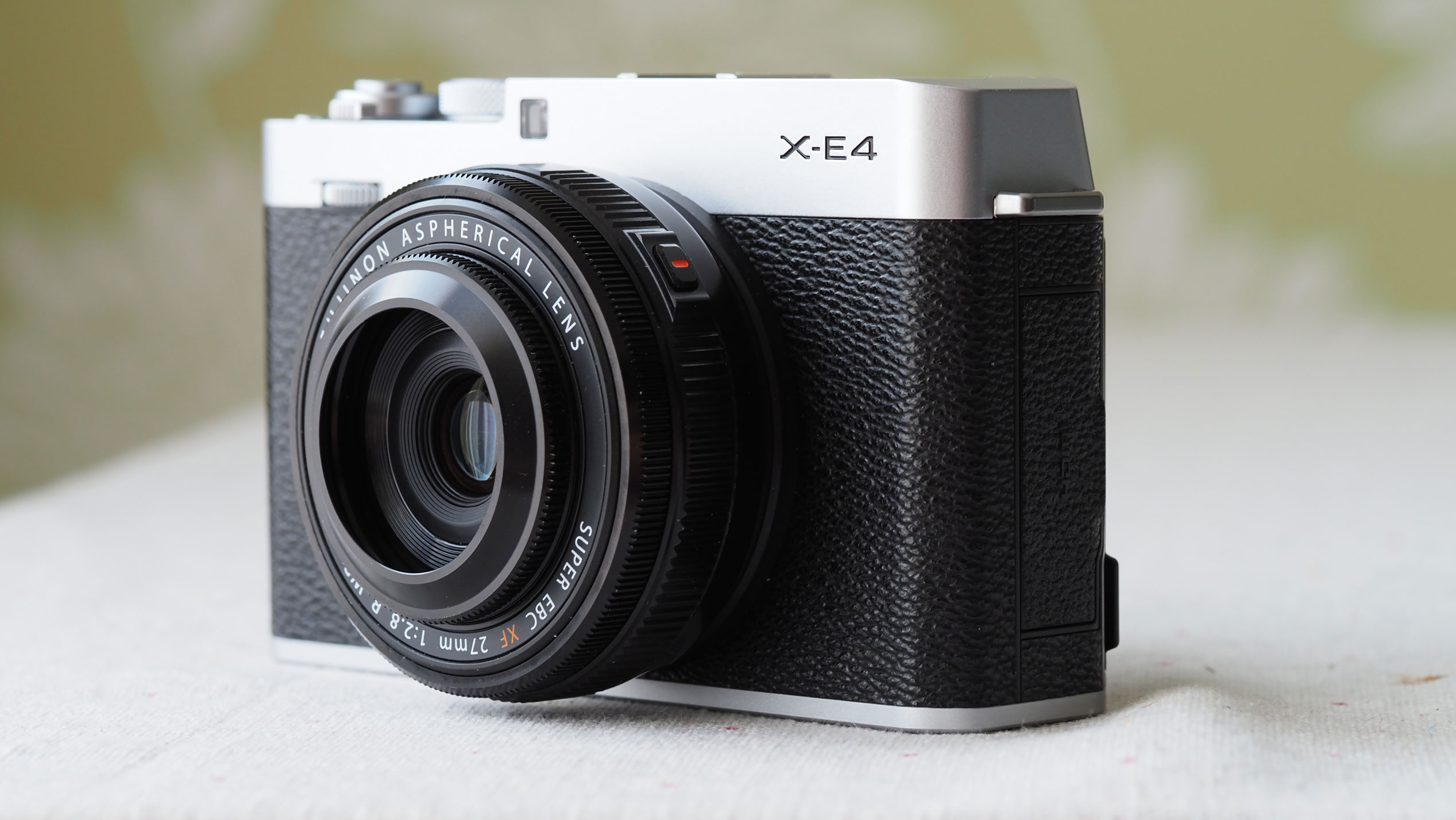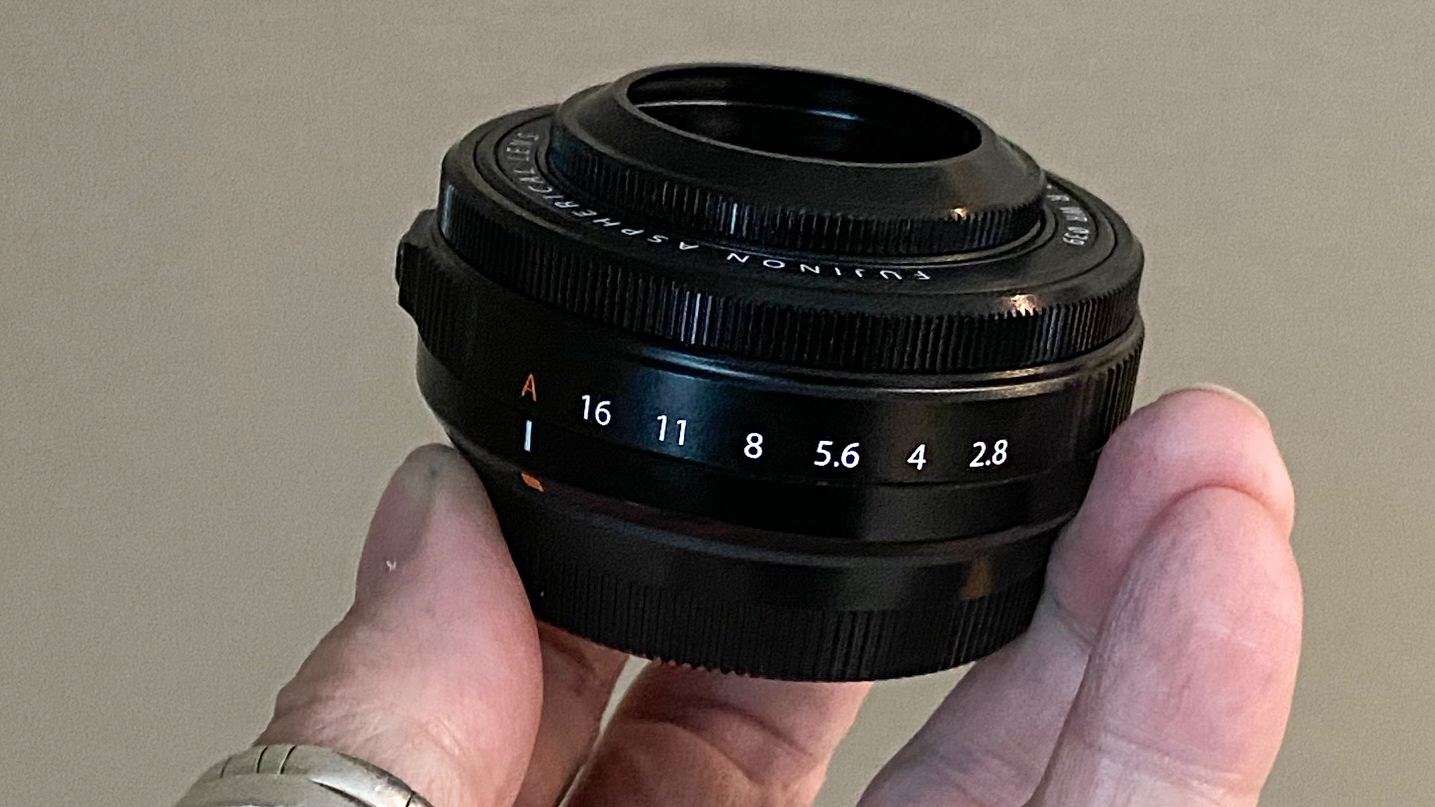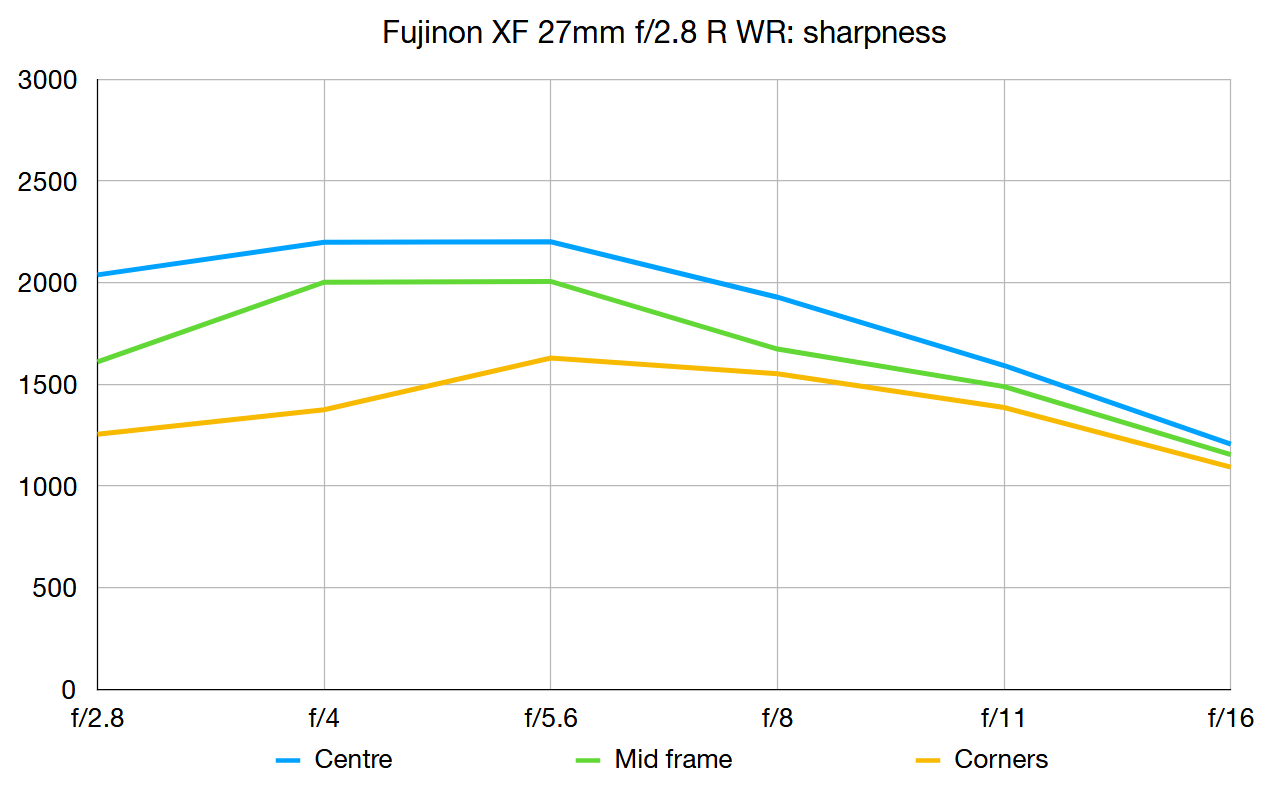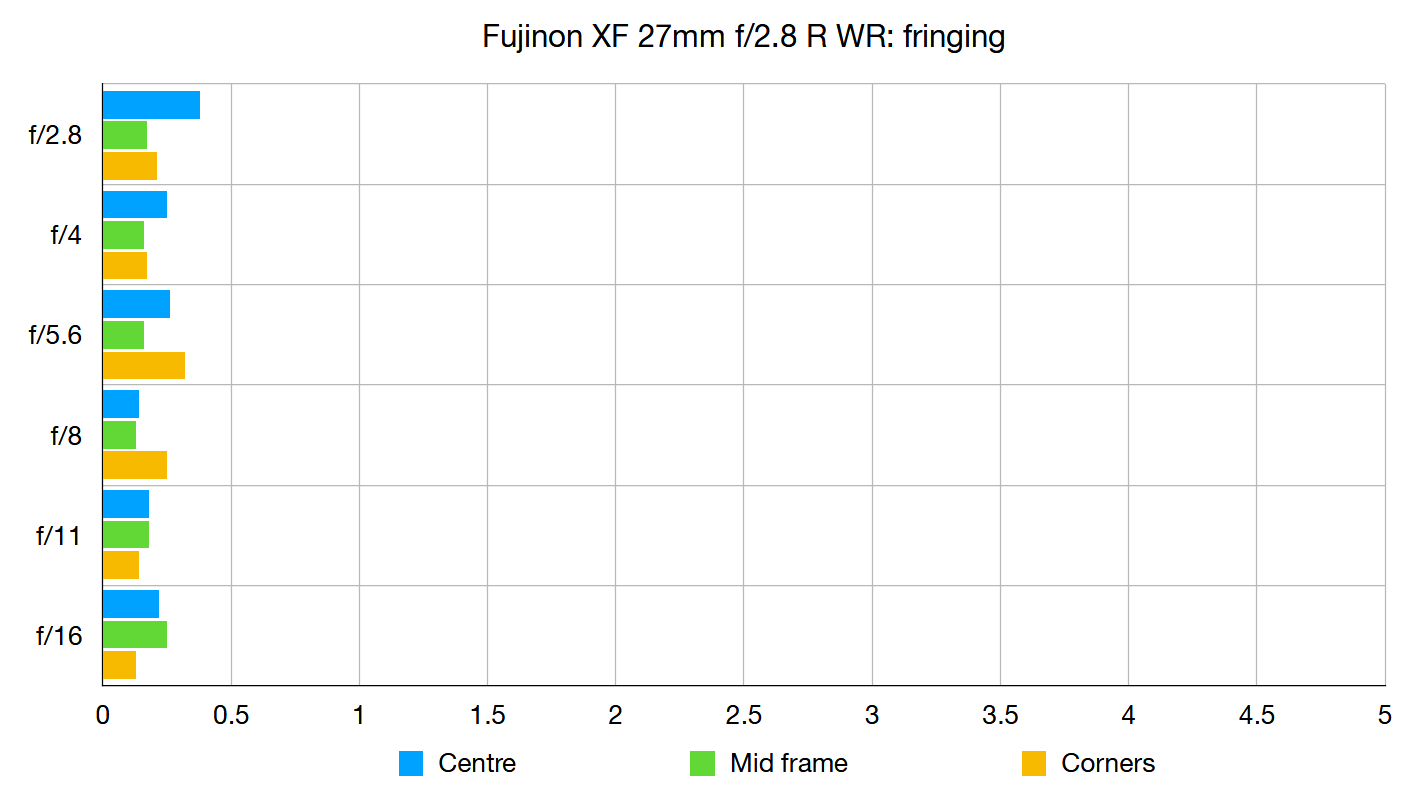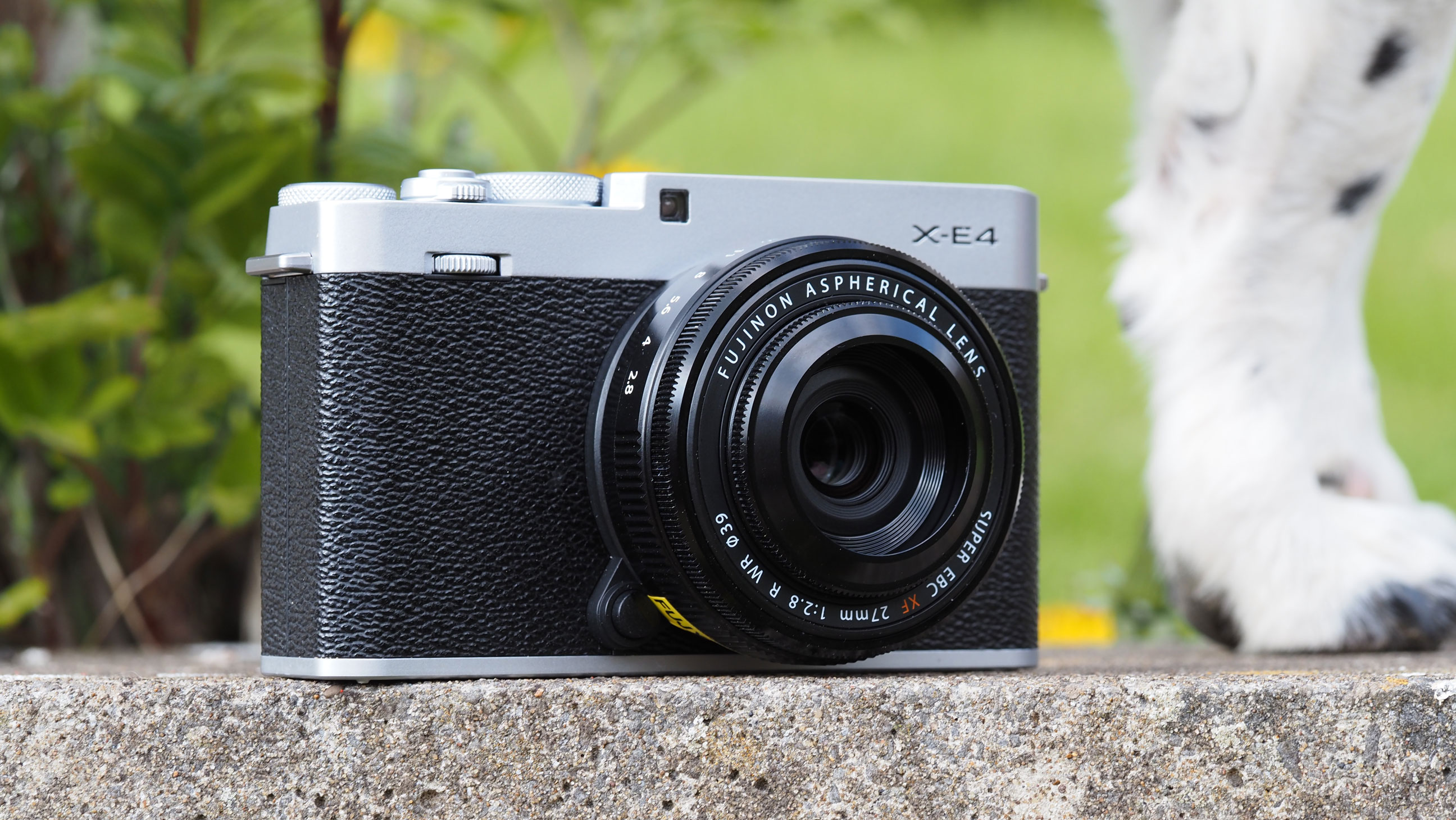Digital Camera World Verdict
We’re big fans of the original Fujinon XF27mm lens, which was extremely slim and yet delivered extremely good edge to edge sharpness. This new one meets the same high standards but adds weather proofing and, even better, a physical aperture ring. It’s a great lens in its own right and even better as a kit lens for the X-E4. Fujifilm’s promise of a fast and silent AF motor didn’t seem borne out by our lens, though, which was quick enough but noisy by modern standards.
Pros
- +
Ultra-slim dimensions
- +
Edge to edge image quality
- +
Weather sealing
- +
Physical aperture ring
Cons
- -
Unrefined autofocus
Why you can trust Digital Camera World
The new Fujifilm X-E4 is a slim rangefinder-style mirrorless camera with a classic external shutter speed dial, and really needs a slim lens with an (equally classic) aperture ring to set it off. The Fujinon XF27mmF2.8 R WR is that lens, and is sold with the X-E4 as a kit, though you can also buy this lens separately if you already have an X-mount camera – it will work with all of them.
This is an update of the original Fujinon XF27mmF2.8 with the same optical configuration, we’re told, but with the addition of weatherproofing and that all-important aperture ring, which is what helps distinguish Fujifilm’s lens range from those of other APS-C camera makers.
Normally, you would expect any camera’s kit lens to be a zoom, but zooms are quite thick and bulky, whereas this lens is just 23mm thick and, as a prime lens, probably suits the shooting style of anyone buying an X-E4.
Specifications
Lens mount: Fujifilm X
Autofocus: Yes
Image stabilization: No
Full frame: No
Lens configuration: 7 elements in 5 groups, inc 1 aspherical element
Focal length: 27mm (41mm equivalent)
Angle of view: 55.5°
Max. aperture: F2.8
Min. aperture: F16
Number of blades: 7 (rounded diaphragm opening)
Minimum Object Distance: 34cm
Max. magnification: 0.1x
Filter size: 39mm
Diameter x Length: 62 x 23mm
Weight: 84g
Key features
There’s very little to remark upon with this lens, except to note that Fujifilm has done very well to add weatherproofing and a manual aperture ring to such a compact lens and without altering its overall size or optical configuration.
Fujifilm’s X-mount cameras use the APS-C format, so although this is a 27mm lens, its angle of view is actually equivalent to a 41mm lens on a full frame camera. This makes it slightly less ‘wide’ than a 35mm equivalent lens – the classic semi-wide lens focal length for street photography – but still wider than a 50mm ‘standard’ lens.
41mm is a pretty effective all round focal length, and if you were to choose just one prime ‘walk around’ lens to keep on your camera, it might just be this one. Its slim profile means it’s much easier to slide your camera into a coat pocket, too, without the need for a camera bag.
The best camera deals, reviews, product advice, and unmissable photography news, direct to your inbox!
The f/2.8 maximum aperture is pretty modest, given that most primes these days are f/2, f/1.4 or even faster, but that’s the price of compactness. There will be lots of times when this lens’s small size proves much more useful than a faster optic. At 84g it’s also way lighter than most prime lenses.
There’s also no optical stabilization – only Fujifilm zoom lenses have stabilization, and even then only some of them. The Fujifilm X-E4 likewise does not have in-body stabilization, but there are other Fujifilm cameras that do, including the Fujifilm X-S10, X-T4 and the older X-H1.
Build and handling
This lens feels very well made, so its 84g weight is a bit of a surprise. The aperture ring is nice and positive, with clear 1/3EV detents between the full aperture markings. If you set the aperture ring to the ‘A’ position, the aperture will be controlled automatically the the camera body in program AE or shutter priority mode.
The focus ring is fairly narrow, but still pretty generous given the very short barrel, and it’s easy to find with your fingertips without having to look. There’s no focus distance scale and hence no depth of field markings, but these can be displayed on the camera instead.
This lens comes with a curious little ‘inverted’ lens hood which actually angles inwards not outwards. It does the job, though, without spoiling the slim profile of the lens and even offers some of the protection of a lenscap.
Our only complaint would be the autofocus motor. The original Fujinon XF27mm F2.8 was pretty choppy and noisy by modern standards, and while this one is quick enough on the X-E4, it doesn’t seem so very different Fujifilm says the AF is fast, precise and near-silent, but it didn’t seem quite that way to us. It’s not a problem for stills, but we probably wouldn’t use this lens for continuous video AF.
Performance
What a great little lens! Unless you’re shooting wide open at f/2.8, you can expect corner-to-corner sharpness. The lab tests reveal some fall-off, but not enough to be obvious in real world shots. Even wide open, edge sharpness is pretty good.
Fujifilm cameras don’t just apply digital lens corrections to in-camera JPEGs, they embed them in the raw files too, so that most raw conversion software will load these embedded correction profiles automatically, so that if there is any distortion it will be cancelled out. This lens does show some barrel distortion when uncorrected, but you would have to be using software that does not apply correction profiles – some will use these but not necessarily apply them automatically.
Lab tests
We run a range of lab tests under controlled conditions, using the Imatest Master testing suite. Photos of test charts are taken across the range of apertures and zoom settings (where available), then analyzed for sharpness, distortion and chromatic aberration.
We use Imatest SFR (spatial frequency response) charts and analysis software to plot lens resolution at the centre of the image frame, corners and mid-point distances, across the range of aperture settings and, with zoom lenses, at four different focal lengths. The tests also measure distortion and color fringing (chromatic aberration).
Sharpness:
Sharpness is nothing short of superb for such a diminutive lens. Even wide open, centre and mid-frame sharpness is excellent, and gets even better at f/4 and f/5.6 Corner sharpness is inevitably a little less outstanding, but stop down to f/5.6 and you'll struggle to see any corner softness in real-world shooting.
Fringing:
There's not much to see here, which is a good thing! Shorter bars on this graph indicate less fringing, and in general a score under 1 indicates no noticeable fringing. For the XF 27mm f/2.8 R WR to score under 0.5 throughout its aperture range is truly exceptional and puts it on par with the very best – and priciest – lenses we've ever tested.
Distortion: -2.46
Negative results indicate barrel distortion, positive numbers signify pincushion distortion
The XF 27mm f/2.8 R generates noticeable barrel distortion, though this is with digital distortion correction disabled. Enable such corrections and any distortion is essentially canceled out.
Verdict
The specifications might look pretty unadventurous, but this is a terrific little pancake prime that deserves a place in any Fujifilm fan’s camera bag, especially users who like to travel light and use unobtrusive kit.
The 41mm effective focal length might not be wide enough for some (or too wide for others), but all round we think it’s probably more useful than the standard ‘nifty fifty’. Similarly, the f/2.8 maximum aperture is nothing to shout about these days, but this lens is so slim, tiny and light that we would take that any day for general walkaround photography and keep Fujifilm’s big ‘bokeh’ lenses for when they’re needed.
Our only gripe is that the AF is pretty coarse. This is still a great lens for stills photography, but wouldn’t be our first choice for video.
Read more:
• Best Fujifilm lenses
• Best Fujifilm cameras
• Fujifilm X-E4 review
• Best pancake lenses
• Best 50mm lenses
• Best 35mm lenses
• Best camera lenses to buy

Rod is an independent photography journalist and editor, and a long-standing Digital Camera World contributor, having previously worked as DCW's Group Reviews editor. Before that he has been technique editor on N-Photo, Head of Testing for the photography division and Camera Channel editor on TechRadar, as well as contributing to many other publications. He has been writing about photography technique, photo editing and digital cameras since they first appeared, and before that began his career writing about film photography. He has used and reviewed practically every interchangeable lens camera launched in the past 20 years, from entry-level DSLRs to medium format cameras, together with lenses, tripods, gimbals, light meters, camera bags and more. Rod has his own camera gear blog at fotovolo.com but also writes about photo-editing applications and techniques at lifeafterphotoshop.com
